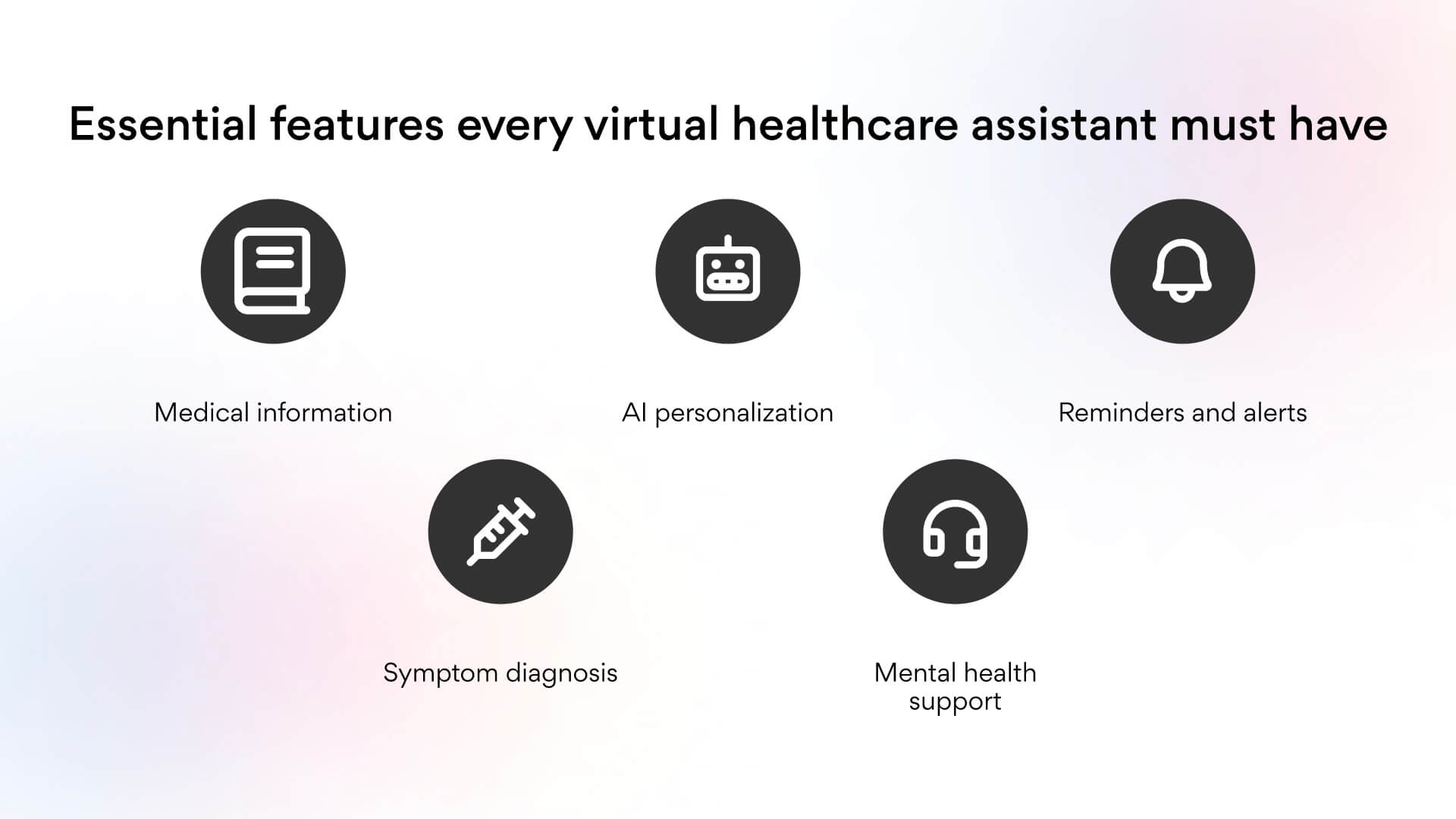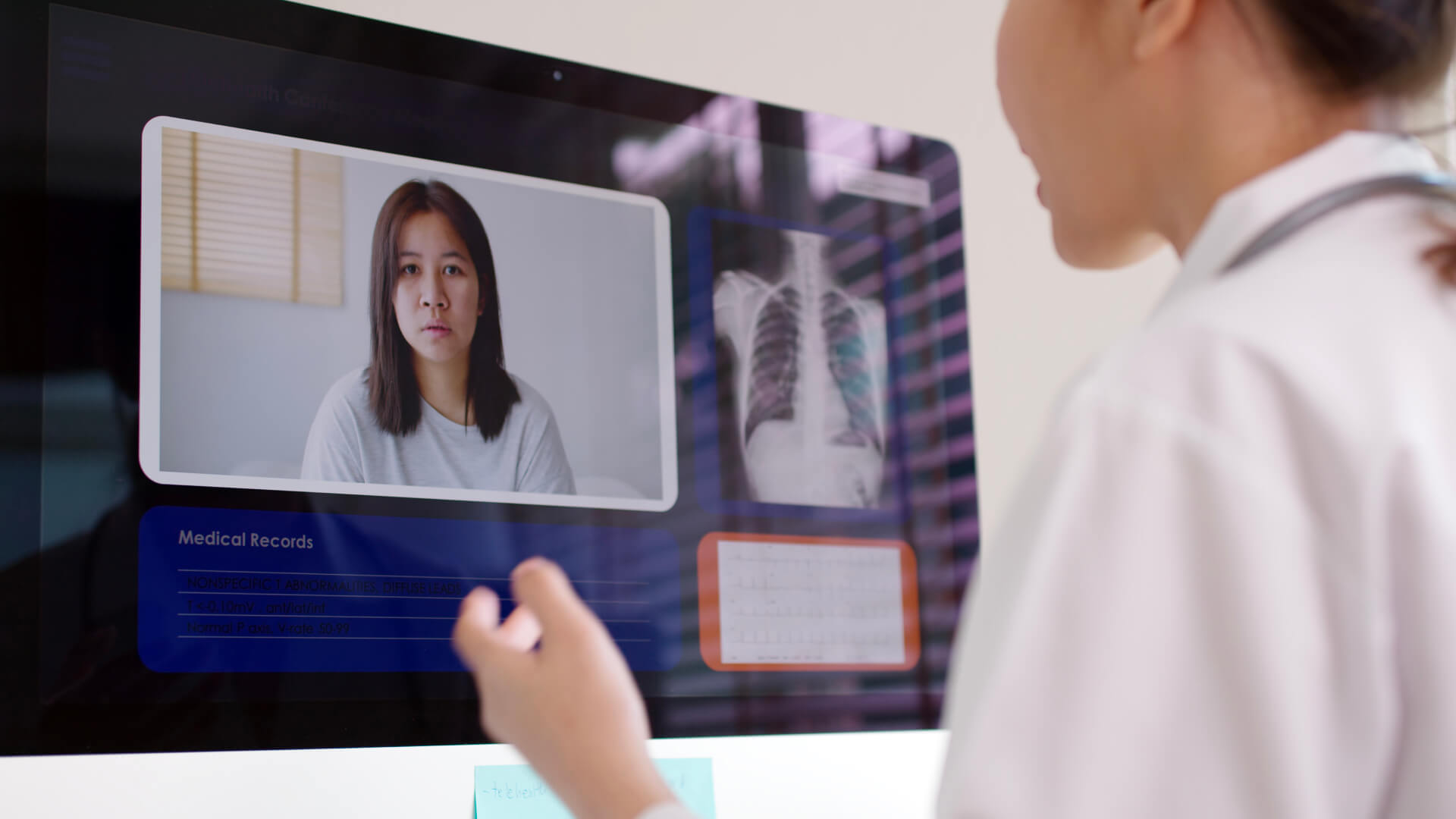
Apr 18 2022
10 min read

In today’s healthcare landscape, medical assistants(humans) serve as indispensable partners for healthcare professionals, skillfully managing everything from appointment scheduling, patient interactions, and essential administrative duties. They are productivity boosters for doctors. However, during challenging times, such as pandemics or regional health crises, the surge in patient numbers can create an overwhelming workload for these vital healthcare workers. For many small and medium-scale healthcare providers, they may not have the resources for these dedicated medical assistants, often affecting the productivity of doctors as managing these tasks becomes even more challenging.
What is the solution?
I am sure you might have gotten the hint by now. As we find ourselves in an era where Artificial Intelligence is advancing daily, we can make use of Virtual Health Assistants (VHAs), which will handle all the tasks that are being done by medical assistants and contribute to the productivity of healthcare providers of all scales and also offer unmatched healthcare experience for patients anywhere, anytime.
Virtual Health Assistants(VHS) are AI-powered tools that make use of technologies like Natural Language Processing, Machine Learning, and Data Analysis to help assist healthcare providers in transforming the patient-care experience. They can perform repetitive tasks like scheduling patient appointments and managing follow-ups, as well as complex tasks like helping people identify their illnesses based on symptoms, offering personalized solutions, and monitoring health conditions. Healthcare sectors at any level can make use of VHAs to improve their patients’ experience and make the process seamless.
Virtual Health Assistants bring many impressive functionalities to the table for healthcare providers, often making their lives easier and more efficient. Let’s take a look at these capabilities one by one:
Unmatched accessibility⚡: with VHAs as, the days of scheduling appointments and enduring long queues for health advice are over; healthcare guidance is now instantly accessible, as virtual assistants provide patients with immediate answers.
Reducing human error in healthcare 📉: Even the best professionals can make mistakes, which in healthcare can lead to serious consequences. virtual healthcare assistants use data-driven algorithms to maintain consistent accuracy, greatly reducing the likelihood of human errors.
Resource optimization 🧮: VHA can handle tasks such as resolving patient queries and sending appointment reminders, allowing health-care professionals to concentrate on more complex duties. as a result, healthcare facilities can manage resources more effectively and streamline operations.
Anonymity🥷: AI-powered medical VHA ensures individual anonymity, which is crucial for handling sensitive cases.
Training that matches top professionals🤖: VHAs are more than just programmed software; they come equipped with specialized medical training. this guarantees that the advice provided and the patient queries handled are equivalent to those managed by trained medical professionals.
Embracing virtual medical trends 📞: As telemedicine & virtual consultations become more prevalent, VHAs seamlessly integrate into this trend. these assistants enhance and support the virtual health wave, ensuring patients receive smooth and effective digital medical consultations.
Scalability customized for every need📈 : AI-owered virtual assistants in healthcare are versatile enough to suit both large facilities and individual practitioners. their adaptable design allows healthcare professionals to adjust service levels according to patient demand or specific requirements, enabling efficient resource distribution and patient management.
Significant cost reductions💵: Virtual assistants substantially lower business overhead by reducing the need for staff at desks.
Check out: Pickcel's case study on how Manipal Hospitals improved branding & internal communications with Pickcel's On-Premise Digital Signage for Healthcare

To truly serve their purpose, these VHAs must be equipped with a range of features that not only respond to immediate needs but also proactively manage the patient’s health. Here are a few of the must-have features for any AI-driven healthcare assistant:
Medical information: it’s vital that VHAs provide accurate, evidence-based medical information to help patients understand their conditions and treatments. for instance, a patient newly diagnosed with diabetes should receive detailed information on managing their condition through diet and lifestyle changes.
AI personalization: Personalized care is key. AI personalization tailors advice & recommendations to fit each user’s specific medical history and preferences, such as suggesting cardiovascular workouts for users interested in heart health.
Reminders and alerts: These assistants should ensure patients adhere to their medical regimens through timely reminders for medication, appointments, and routine check-ups, which is particularly critical for elderly patients managing multiple prescriptions.
Symptom diagnosis: While not a substitute for professional medical advice, VHAs should be capable of conducting an initial analysis of symptoms to provide possible explanations and recommend further medical consultation when necessary.
Mental health support: Given the importance of mental wellness, these tools should offer resources and direct contact options for mental health ehr support, such as suggesting relaxation techniques or therapy for people experiencing anxiety or expressing signs of depression.
By incorporating these features, Virtual Health Assistants can significantly enhance patient care and experience, making them a crucial component of modern healthcare delivery.

Now that you understand how VHAs play their role in healthcare centers, we can explore using these VHAs more efficiently by integrating them with Digital Signage software like Pickcel. Digital signage is already used in hospitals to display important announcements, patient appointment orders, wait times, doctor availability, notices and updates from the WHO, patient ward information, the air quality index, and much more. With the help of AI, this system can be fine-tuned to allow for interaction, such as creating an avatar of a VHA to greet visitors and initiate conversations. Patients and attendees can then interact with these VHAs in real-time, just as they would with humans, to get the information they need.
Here’s how these two technologies can work together to benefit healthcare facilities:
Improved navigation and efficiency: Digital signage can guide patients and visitors efficiently within the hospital through interactive maps and directional information, which can be easily updated or changed. when combined with VHAs, these systems can provide personalized directions and reminders about appointments, reducing the time staff spend giving directions and helping manage patient flow.
Enhanced personalized patient care: Digital whiteboards and displays in patient rooms can be connected to VHAs to show tailored patient information such as treatment schedules, medical team details, and educational content about the patient’s health. this integration ensures that all information displayed is up-to-date and personalized, enhancing patient understanding and engagement.
Reduced waiting room anxiety: Digital signage can display real-time updates about wait times and procedures, helping to reduce anxiety for patients and their families. when integrated with VHAs, these displays can also provide personalized updates directly to patients’ mobile devices or via personalized screens, keeping them informed and engaged while they wait.
Real-time communication and alerts: In critical situations, VHAs combined with digital signage can disseminate emergency alerts, urgent health announcements or safety protocols throughout the hospital quickly. this system ensures that both patients and staff receive crucial information promptly, improving the facility’s response to emergencies.
Operational efficiency and staff allocation: Digital signage displays can show scheduled information for staff, including shift changes, room assignments, and other operational details. VHAs can manage these displays to ensure information is always current, helping to streamline hospital operations and optimize staff allocation.
Streamlined communication in medical offices: When integrated with VHAs, digital signage for medical offices enhances front-desk operations by automating check-ins, displaying real-time updates, and delivering personalized health content—streamlining workflows and improving patient satisfaction.
Improved diagnosis and treatment: Digital signage can enhance diagnostic accuracy by displaying high-resolution images of x-rays or ct scans that can be analyzed more effectively. VHAs can assist by quickly retrieving and displaying relevant patient data or medical images alongside these visual aids, aiding in faster and more accurate diagnosis.
Promotion and information dissemination: Digital signage in hospital lobbies and public areas can be used to celebrate donors, promote hospital services, and share success stories. VHAs can manage the content displayed, ensuring it is relevant and up-to-date, which can help in building trust and promoting hospital services effectively.
Check out: The major benefits of digital signage in healthcare
As we navigate the complexities of modern healthcare, the synergy between Virtual Health Assistants and digital signage represents a pivotal innovation, promising to redefine our experience of medical care. By leveraging these advanced technologies, healthcare facilities not only enhance operational efficiency and patient engagement but also set a new standard for personalized and responsive care.
The impact of digital signage on patient experience is profound—it helps deliver real-time, accessible information, reduces anxiety through clear communication, and supports a more informed, confident patient journey. This fusion of digital prowess and medical expertise illustrates a dynamic pathway towards an interconnected, more efficient healthcare system that prioritizes patient well-being above all.
As healthcare continues to evolve, embracing these technologies will be crucial for any facility looking to lead in healthcare innovation and patient satisfaction, and effective marketing strategies in healthcare. With VHAs and digital signage, the future of healthcare is not just a concept—it’s a reality unfolding before us, ensuring that every patient encounter is as informed, calm, and effective as possible. Let’s move forward with the confidence that our healthcare environments are becoming more adaptive, intelligent, and patient-focused than ever before.





Apr 18 2022
10 min read

May 7 2025
5 min read

Oct 19 2023
7 min read

Sep 19 2023
6 min read
Take complete control of what you show on your digital signage & how you show it.
Start Free Trial Schedule My Demo